
絕緣試樣工頻電壓擊穿測試儀 產(chǎn)品特點
1、運行于WIN XP/WIN7/WIN8系統(tǒng)下的獨立安裝軟件,界面友好,操作簡單
2、實驗顯示曲線,數(shù)據(jù)自動儲存,自動查找
3、多種用途可以進行交、直流試驗試驗準確、可靠、安全
4、計算機控制試驗過程,自動判斷停止,自動復位
5、超壓、過流、短路、漏電、誤操作等多種保護
絕緣試樣工頻電壓擊穿測試儀 試驗方法
1、絕緣試樣空氣中擊穿或耐壓試驗
2、絕緣試樣浸油中擊穿或耐壓試驗
3、絕緣試樣空氣中階梯擊穿或耐壓試驗
4、絕緣試樣浸油中階梯擊穿或耐壓試驗
注:根據(jù)用戶要求,可定制其他試驗方式
交直流試驗的切換
1)本儀器高壓輸出為交流電壓。直流的獲得方式為在原回路中串入高壓硅堆,使測試回路為脈動的直流電壓。實現(xiàn)的過程為,硅堆已經(jīng)在高壓變壓器的高壓絕緣塔中,平時用一個短路桿把高壓硅堆短接。需要直流試驗時,取出短路桿,使高壓硅堆接入測試電路中,這時回路的電壓為脈動的直流電壓。
2)前面板直流交流選擇按鈕。該按鈕的狀態(tài)不能改變設(shè)備輸出的電壓性質(zhì)。按下該按鈕,設(shè)備僅僅是把直流報警電路接入。指示用戶,當打開箱門時,您需要對高壓均壓球放電。轉(zhuǎn)動放電桿,使放電桿的端部銅球接觸高壓均壓球。建議用戶每次放電銅球接觸高壓均壓球時間大于五秒。
3)試驗的交直流電壓切換,主要取決于高壓絕緣塔中的短路桿是否取出。當取出短路桿時,高壓均壓球上的電壓為直流電壓,插入短路桿時,高壓均壓球上的電壓為交流電壓。短路桿的取出、插入?yún)⒖醋髠?cè)的示意圖。
4)在直流試驗時,計算機也要選擇直流狀態(tài),否則測的結(jié)果是不正確的。簡單的說,交流電壓與直流電壓有倍的關(guān)系。
液體電介質(zhì)擊穿
純凈液體電介質(zhì)與含雜質(zhì)的工程液體電介質(zhì)的擊穿機理不同.對前者主要有電擊穿理論和氣泡擊穿理論,對后者有氣體橋擊穿理論.沿液體和固體電介質(zhì)分界面的放電現(xiàn)象稱為液體電介質(zhì)中的沿面放電.這種放電不僅使液體變質(zhì),而且放電產(chǎn)生的熱作用和劇烈的壓力變化可能使固體介質(zhì)內(nèi)產(chǎn)生氣泡.經(jīng)多次作用會使固體介質(zhì)出現(xiàn)分層,開裂現(xiàn)象,放電有可能在固體介質(zhì)內(nèi)發(fā)展,絕緣結(jié)構(gòu)的擊穿電壓因此下降.脈沖電壓下液體電介質(zhì)擊穿時,常出現(xiàn)強力氣體沖擊波(即電水錘),可用于水下探礦,橋墩探傷及人體內(nèi)臟結(jié)石的體外破碎.
Product features
1. An independent installation software running on the WIN XP/WIN7/WIN8 system, with a user-friendly interface and simple operation
2. Experimental display curve, automatic data storage, automatic search
3. Multiple uses can be used for accurate, reliable, and safe AC and DC testing
4. Computer controlled experimental process, automatic judgment stop, automatic reset
5. Multiple protections such as overvoltage, overcurrent, short circuit, leakage, and misoperation
test method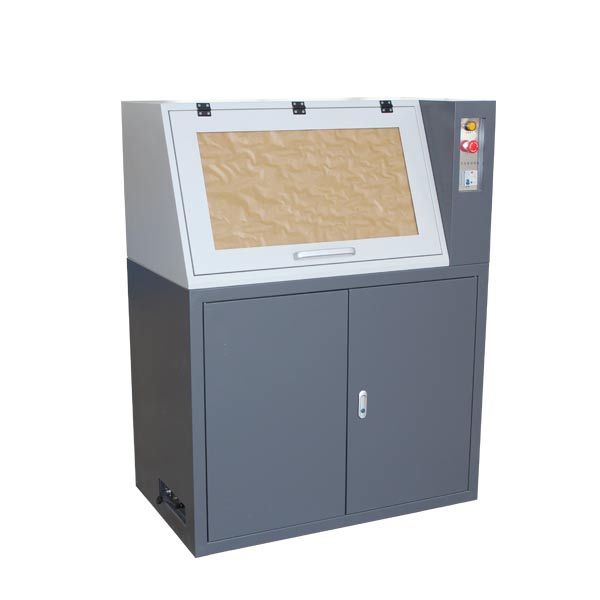
1. Insulation sample breakdown or withstand voltage test in air
2. Breakdown or withstand voltage test of insulation samples immersed in oil
3. Step breakdown or withstand voltage test of insulation samples in air
4. Step breakdown or withstand voltage test of insulation samples immersed in oil
Note: Other testing methods can be customized according to user requirements
Switching between AC and DC tests
1) The high-voltage output of this instrument is AC voltage. The method of obtaining direct current is to connect a high-voltage silicon stack in series in the original circuit, making the test circuit a pulsating direct current voltage. The implementation process is that the silicon stack is already in the high-voltage insulation tower of the high-voltage transformer, and a short-circuit pole is usually used to short circuit the high-voltage silicon stack. When a DC test is required, remove the short-circuit rod and connect the high-voltage silicon stack to the test circuit. At this time, the voltage of the circuit is a pulsating DC voltage.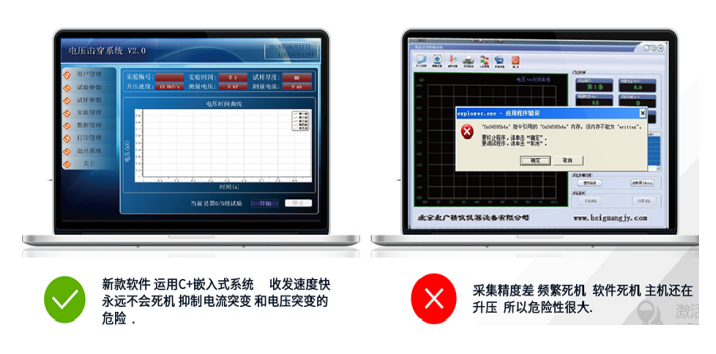
2) Front panel DC AC selection button. The status of this button cannot change the voltage nature of the device output. Pressing this button only connects the DC alarm circuit to the device. Instruct the user that when opening the box door, you need to discharge the high-voltage equalizing ball. Rotate the discharge rod so that the copper ball at the end of the discharge rod contacts the high-voltage equalizing ball. It is recommended that the user press the copper ball for more than five seconds each time it comes into contact with high voltage during discharge.
3) The switching of AC/DC voltage in the experiment mainly depends on whether the short-circuit rod in the high-voltage insulation tower is removed. When the short-circuit rod is removed, the voltage on the high-voltage equalizing ball is DC voltage, and when the short-circuit rod is inserted, the voltage on the high-voltage equalizing ball is AC voltage. Please refer to the schematic diagram on the left for the removal and insertion of the short-circuit rod.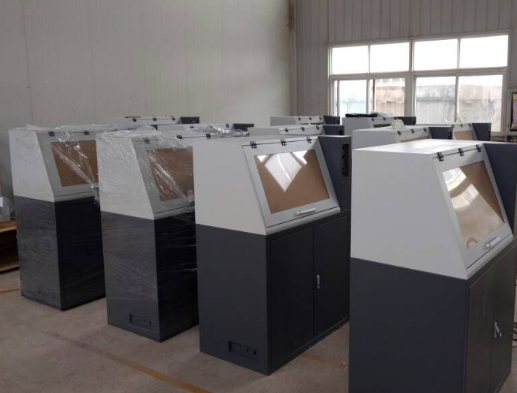
4) During the DC test, the computer should also choose the DC state, otherwise the measurement results will be incorrect. Simply put, there is a fold relationship between AC voltage and DC voltage.
Liquid dielectric breakdown
The breakdown mechanism of pure liquid dielectrics is different from that of engineering liquid dielectrics containing impurities. There are mainly electric breakdown theory and bubble breakdown theory for the former, and gas bridge breakdown theory for the latter. The discharge phenomenon along the interface of liquid and solid dielectrics is called surface discharge in liquid dielectrics. This discharge not only causes the liquid to deteriorate, but also, Moreover, the thermal effect and drastic pressure changes generated by discharge may cause bubbles to form within the solid medium. Multiple actions can cause stratification and cracking of the solid medium, and discharge may develop within the solid medium, resulting in a decrease in the breakdown voltage of the insulation structure. When liquid dielectric breakdown occurs under pulse voltage, strong gas shock waves (i.e. electric water hammer) often appear, which can be used for underwater exploration, bridge pier inspection, and external crushing of human visceral stones
絕緣介電強度試驗與絕緣電阻測試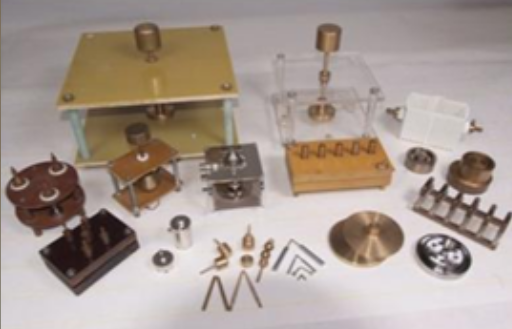
絕緣介電強度試驗是在相互絕緣的部件之間或絕緣的部件與地之間,在規(guī)定時間內(nèi)施加規(guī)定的電壓,以此來確定電機在額定電壓下能否安全工作,能否耐受由于開關(guān)、浪涌及其它類似現(xiàn)象所導致的過電壓的能力,從而評定電機絕緣材料或絕緣間隙是否合適。如果電機有缺陷,則在施加試驗電壓后,會產(chǎn)生擊穿放電或損壞。擊穿放電表現(xiàn)為飛弧(表面放電)、火花放電(空氣放電)或擊穿(擊穿放電)現(xiàn)象。過大的漏電流可能引起電參數(shù)或物理性能的改變 。
絕緣介電強度試驗與絕緣電阻測試是不能等同的。清潔、干燥的絕緣體盡管具有高的絕緣電阻,但卻可能發(fā)生不能經(jīng)受絕緣介電強度試驗的故障;反之,一個臟的、損傷的絕緣體,其絕緣電阻雖然低,但在高電壓下也可能不會被擊穿。由于絕緣部件是由不同材料制成或是由不同材料合成的,它們的絕緣電阻各不相同。因此,絕緣電阻的測試不能完全代表對清潔度或無損傷程度的直接量度。但是,這種測試對確定高溫、潮濕、污物、氧化或揮發(fā)性材料等對絕緣特性影響程度是極為有益的 。
事實上,一臺由于過熱而使絕緣材料已經(jīng)老化變脆的電機,其絕緣電阻仍可高達100MΩ,但卻無法通過絕緣介電強度試驗。絕緣電阻測試對絕緣材料受潮特別敏感,對絕緣材料老化則顯得力不從心。
絕緣介電強度試驗一般采用50Hz正弦波交流電,而絕緣電阻測試均采用直流電。
技術(shù)要求:
01、輸入電壓: 交流220 V
02、輸出電壓: 交流0--50 KV ;
直流0--70 KV ;(同類產(chǎn)品做到50kv)
03、電器容量:10KVA
04、高壓分級:0--50KV全程可調(diào)(采用高精度電壓采樣器件,取消了同類廠家由于電壓采樣精度不夠必須采用高壓分級的方式)
05、升壓速率:100 V/S 200 V/S 500 V/S 1000 V/S 2500 V/S 3000 V/S (此項滿足標準里面極快速升壓試驗要求)
備注:本產(chǎn)品采用最先進的直流伺服電機加載減速機構(gòu),保證了標準里面關(guān)于極慢速試驗和極快速試驗的最新要求,(一般廠家為皮帶輪機構(gòu),誤差較大)保證用戶可以自由選擇升壓速率,是目前同類產(chǎn)品中滿足國標對于升壓速率要求的測試設(shè)備。可以根據(jù)用戶需求設(shè)定不同的升壓速率
06、試驗方式:
直流試驗:1、勻速升壓2、階梯升壓3、耐壓試驗
交流試驗:1、勻速升壓2、階梯升壓3、耐壓試驗
注:根據(jù)不同行業(yè)的標準,我們可以根據(jù)用戶的要求,依據(jù)貴行業(yè)標準,為您定制行業(yè)標準所需的特殊測試功能。
07、電壓試驗精度:≤ 1%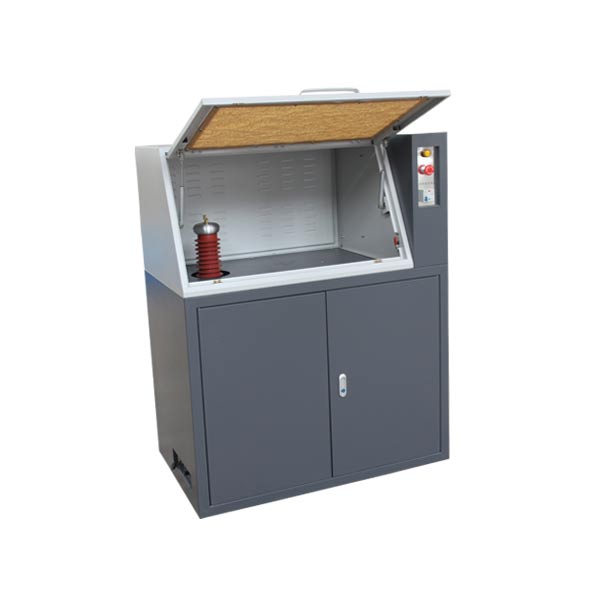
08、電極規(guī)格:1、片材電極 ¢25mm 兩個 片材電極 ¢75mm一只
2、管用電極 兩個 、一套。
09、過電流保護裝置應有足夠靈敏度以保證試樣擊穿時在0.05S內(nèi)切斷電源。
10、本儀器采用先進的無觸點原件勻速調(diào)壓方式,淘汰同類產(chǎn)品中機械傳動升壓方式。
11、一次試驗可以做5個試樣。備注:(同類產(chǎn)品一次試驗只能做一個試樣)
12、耐壓時間設(shè)定:0-6小時(可通過軟件連續(xù)設(shè)定)
電氣強度(Dielectric strength),指擊穿電壓比上擊穿樣品的厚度等于樣品的電氣強度。
在物理學中,術(shù)語電氣強度具有以下含義:
絕緣材料中,純材料在理想條件下可以承受的最大電場而不會損壞(即不會經(jīng)歷其絕緣性能的失效)。
對于電介質(zhì)材料和電極的具體配置,導致?lián)舸┑淖钚∈┘与妶觯矗┘拥碾妷撼噪姌O分離距離)。
材料的理論電氣強度是大塊材料的固有屬性,并且與施加電場的材料或電極的構(gòu)造無關(guān)。這種“固有介電強度”對應于在理想實驗室條件下使用純物質(zhì)測量的值。在擊穿時,電場釋放束縛的電子。如果施加的電場足夠高,來自背景輻射的自由電子可能會加速到在被稱為雪崩擊穿的過程中與中性原子或分子碰撞期間釋放額外電子的速度。擊穿發(fā)生得相當突然(通常在幾納秒),導致通過材料形成導電路徑和破壞性放電。對于固體材料,擊穿事件嚴重降低,甚至破壞其絕緣能力。
影響表觀電氣強度的因素:
隨著樣品厚度的增加而降低。(見下面的“缺陷”)
隨著工作溫度的升高而降低。
它隨著頻率的增加而降低。
對于氣體(例如氮氣,六氟化硫),通常隨著濕度的增加而降低。
對于空氣,介電強度隨著絕對濕度的增加而略有增加,但隨著相對濕度的增加而減小
主要配置:
1、 試驗主機一臺
2、5萬伏高壓發(fā)生器一臺
3、 全自動微電腦電壓調(diào)壓裝置一套(串口方式)
4、 試驗電極規(guī)格(紫銅)
5、 試驗用油盒一只:材質(zhì)為有機玻璃
6、 電磁自動放電裝置一套。
7、 電壓擊穿計算機測控軟件一套
8、 計算機一套(專用抗強干擾計算機)
9、彩色噴墨打印機一臺(惠普品牌)
10、國家一級計量鑒定質(zhì)檢證書一份
11、產(chǎn)品使用說明書一份
12、合格證一份
整機組成:
升壓部件:由調(diào)壓器和高壓變壓器組成0~50KV的升壓部分。動部件:由步進電機均勻調(diào)節(jié)調(diào)壓器使加給高壓變壓器的電壓變化。檢測部件:由集成電路組成的測量電路。通過信號線把檢測的模擬信號和開關(guān)信號傳給計算機。計算機軟件:通過智能電路把由檢測設(shè)備采集的測控信號傳給計算機。計算機根據(jù)采集的信息控制設(shè)備運行并處理試驗結(jié)果。試驗電極:根據(jù)國家標準(1408.1-2006)隨設(shè)備提供三個電極,具體規(guī)格為:Ф25mm?25mm兩個;Ф75mm?25mm一個。(訂做除外)
產(chǎn)品保修承諾:
1、免費送貨到用戶指定的地點,免費指導安裝、培訓及調(diào)試。
2、保修期內(nèi)人為損壞的零部件按采購(加工)價格收費更換。
3、保修期外繼續(xù)為用戶提供優(yōu)質(zhì)技術(shù)服務,在接到用戶維修邀請后3天內(nèi)派工程師到達用戶現(xiàn)場進行維修。并享有優(yōu)惠購買零配件的待遇。
4、傳感器過載及整機電路超壓損壞不在保修范圍內(nèi)。
5、產(chǎn)品質(zhì)保期:自安裝正常使用日起一年;
6、軟件升級:終生免費提供新版本控制軟件。
業(yè)務咨詢:932174181 媒體合作:2279387437 24小時服務熱線:15136468001 盤古機械網(wǎng) - 全面、科學的機械行業(yè)免費發(fā)布信息網(wǎng)站 Copyright 2017 PGJXO.COM 豫ICP備12019803號